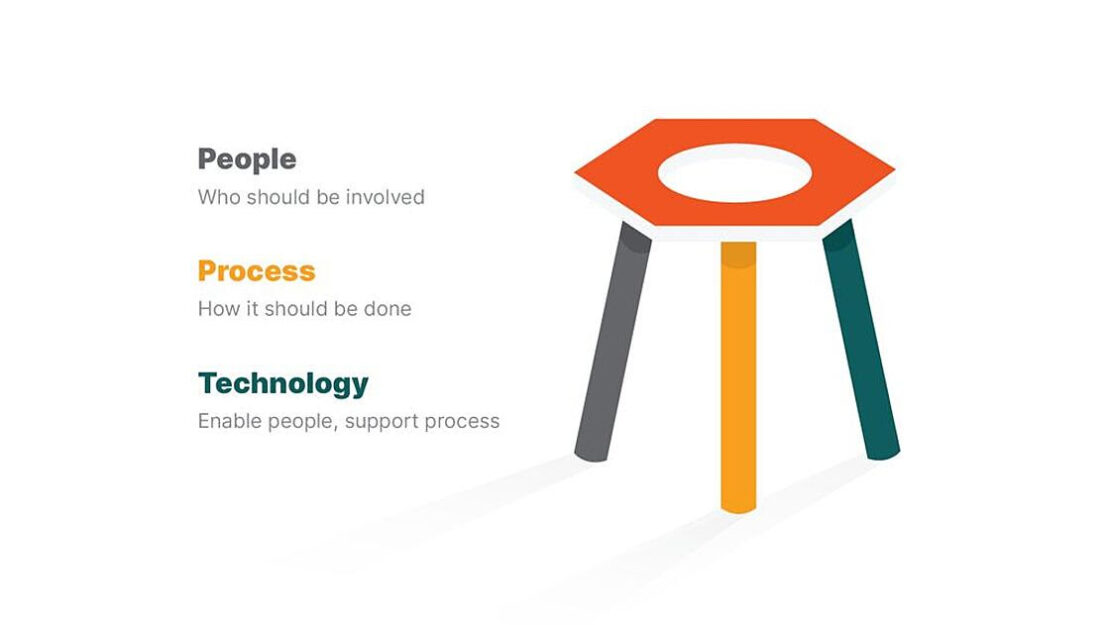
For some time, I’ve been looking for one “source” that curates modern takes on HR Tech, perspectives from the people who build it, and its impact on enterprise — something that’s tailor-made by professionals for decision-makers.
I never found it — so I decided to build it.
Every week, I’ll be sharing fresh insights on tech platforms, design, data, and the future of work — straight to your inbox.
This week, we’re joined by guest author Taryn Lee.
My Thoughts
Hello! My name is Taryn Lee. I’ve been a Principal Consultant at SEI Dallas for 4 years helping our clients across multiple industries to turn their digital and operational strategies into reality.
In this newsletter, I want to walk you through a digital transformation project management model we use at SEI. We’ll be exploring its origins, how it represents some of the biggest issues organizations face in digital transformation, and what insights it offers for your future initiatives. I hope you enjoy and find some interesting takeaways for your next digital transformation project!
The Three-Legged Stool
The three-legged stool analogy originated in 1964, when American psychologist of management Dr. Harold Leavitt developed the business management model known as Leavitt’s Diamond Model. Somewhere along the line, this evolved into the people, process, and technology (PPT) model we know today:
- People: People are, if you hadn’t already guessed, the human capital and resources within an organization — effectively anyone who is involved and impacted by digital transformation efforts. Stakeholders, if you will.
- Process: Processes are the bedrock of all organizational functions, both internal and external, but lots of companies make the mistake of approaching processes reactively. However, effective digital transformations require leaders not to think of processes as contingent on technology — that is, how processes will change as a result of new technology — but rather, what ideal processes look like and the options for new technology that will help achieve them.
- Technology: Without new technology, it wouldn’t be digital transformation. All technology, most commonly a software stack or suite of tools, is expected to empower people and support processes. But, as we’ll explore throughout this newsletter, it is still the most overlooked element.

The PPT model is presented in many ways, with some popular representations being Venn diagrams and triangles. But most consultants I know choose the three-legged stool because you don’t need to know how the elements work together to understand the risks of not maintaining a balance of the three. In many digital transformation projects, it’s incredibly common for the people and process “legs” to receive more thought, time, and monitoring than the technology leg. This imbalance in effort almost always leads to an imbalance in the end project, with technology coming up short and jostling whoever leans on it for support.
Why technology comes up short comes down to two simple reasons. The first is that tech is costly and, in many cases, under-implemented. The second is that ROI is hard to measure, limiting the opportunities to analyze and improve in the long term. Both of these issues can be mitigated through strategic decisions, but more often than not, they are simply overlooked.
Selling The “T”
There are many things you can say to leadership to try and convince them to invest in tech, but money is often the selling point. Therefore, I like to work with companies to find ways to front-load revenue-unlocking technology wins. Something that can demonstrate immediate ROI, however small, can go a long way in getting buy-in from decision-makers. Structuring your project to deliver a series of these “small” wins is an effective way to change the culture and appetite for digital transformation. It also enables you to achieve ROI as you invest vs. having to wait multiple years to see the return on your investment.
Rebalancing The Legs
In order for a stool to be reliable and comfortable, you need to make sure all the legs are the same length, which is why “rebalancing” is such a frequent and crucial step within the PPT model process. Here are some of the common imbalances we see and how to correct them:
- Rebalance people with tech by integrating training into the project plan and communicating plans for ongoing learning and development (L&D) offerings.
- Rebalance tech with process by ensuring your organizational workflows and procedures — for example, your order placement processes — are up to date and broadly available to stakeholders and operators.
- Rebalance process with people by tuning in to the voices of your employees. Even though they are the ones with their boots on the ground, their input and insights are often overlooked. Even if your initiative is customer-facing, employee insight is incredibly valuable, as they will be the ones helping external stakeholders navigate new processes.
You may notice that all this rebalancing requires a lot of flexibility. During the active implementation phase and after your implementation is complete, continuous improvement will be an ongoing part of the process. During the implementation phase, rebalancing will be a part of scope management, and after delivery, regular evaluation of KPIs will drive activities to rebalance. Inflexibility is a direct and narrow avenue to short-sighted transformation. Instead, I encourage clients to focus on the bigger picture, where all the pieces of the puzzle will eventually fit together.
Identifying KPIs
Management consultant and educator Peter Drucker made a very strong argument for comprehensive performance analysis when he said, “you can’t improve what you don’t measure.” When it comes to digital transformation projects, KPIs can indicate the likelihood of long-term success while also benchmarking your organization’s project execution capabilities. Some of my essential key performance indicators for any project include:
- Adoption rate: Verifying that your efforts don’t go to waste is probably the most important element of any digital transformation project.
- Net promoter score: Building on adoption rate, net promoter scores (NPS) are a great long-term KPI that can help you determine how your people and tech are interacting. The last thing you want after an expensive investment is employees bad-mouthing new tech.
- Turnaround time: This KPI is specific to the project management process itself. Understanding how long implementing your initiative took, as well as any unexpected blockers or delays, can dramatically improve your stakeholders’ experience in future projects.
- Processing time: I’ve yet to come across a digital transformation initiative that had a primary goal other than improving efficiency. Benchmarking processing time before and after an investment offers a very clear picture of how impactful digital transformations are.
Revenue, unfortunately, has no secret one-size-fits-most KPI. Each organization is too unique. But the data you take away from KPI analysis is most useful when it’s as specific as possible. There are questions you can ask to help you determine what KPIs are insightful and actionable:
- Is the goal to expand existing revenue streams or open new ones?
- Are the stakeholders internal customers (meaning KPIs would be related to efficiency, culture, and retention) or external customers (meaning KPIs should focus more on sales, lifetime value, and lead acquisition)?
- Which specific segments of customers do we hope will adopt the new processes, and in what time frame?


